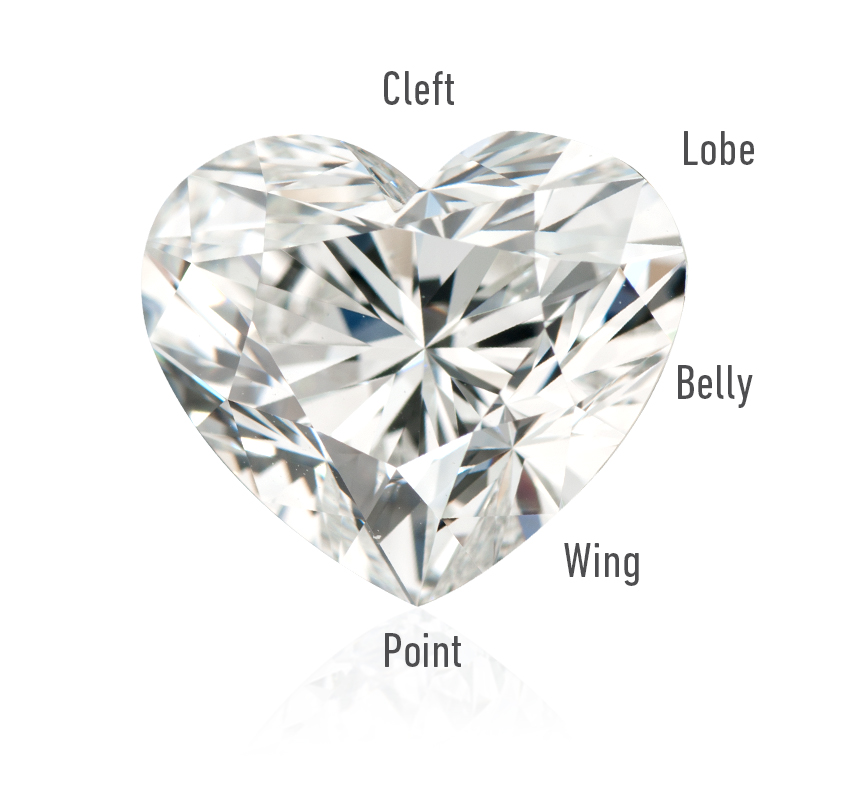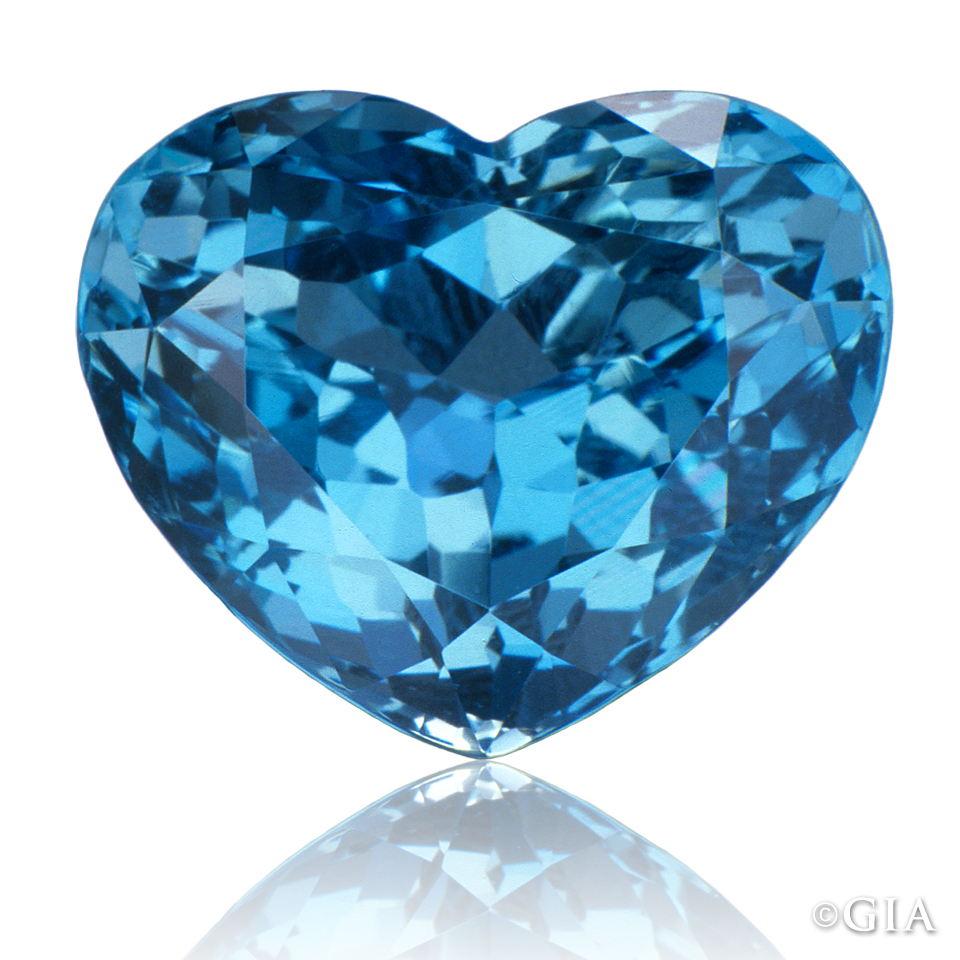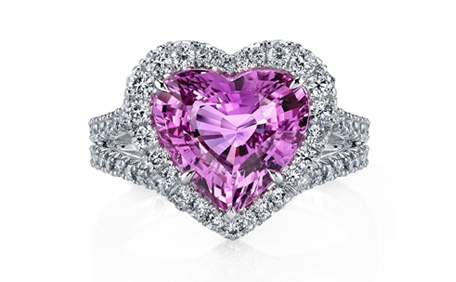Valentine’s Day is nearing, and it’s hard to resist that warm feeling associated with this holiday. When you envision the perfect gift for Valentine’s Day, the first thing that comes to mind is a heart shape. So why not turn up the romance with jewelry that features heart-shaped gemstones? Like all matters of the heart, making a wise decision in your purchase requires care and thought.
Tips for Buying Heart-Shaped Gems
 First, there are a few terms used to describe the parts of a heart-shaped gem that might be helpful to know. The cleft is the V-shaped area between the two rounded ends or lobes of the heart. The slightly curved center where it widens on each side below the lobes is called the belly. As it begins to taper toward the bottom of the heart, the area between the belly and the point is called the wing.
First, there are a few terms used to describe the parts of a heart-shaped gem that might be helpful to know. The cleft is the V-shaped area between the two rounded ends or lobes of the heart. The slightly curved center where it widens on each side below the lobes is called the belly. As it begins to taper toward the bottom of the heart, the area between the belly and the point is called the wing.
- The length of a heart-shaped gem is measured from its point to an imaginary line across the tops of the lobes. The width is the distance from side to side across its widest point. The preferred length-to-width ratio for heart-shaped gems ranges from 1:1 to 1:1.2. It is not unusual for the width to be greater than the length.
- Look for an appealing symmetrical shape. Uneven wings or lobes, flat or bulged wings, or an undefined point can create a distorted outline. A well-cut heart will have lobes that match in size and shape and curve smoothly towards the point. The cleft should have a well-defined V shape.
- Many fancy brilliant cuts (such as pear, oval, marquise, and heart) can show dark areas across the width of a stone that resembles a bow tie. This is especially common in shallow or very deep gems. The larger or darker the bow tie is, the more it detracts from the gem’s face-up appearance.
- To prevent your heart-shaped gem from being chipped accidentally, it’s important to examine the girdle. It shouldn’t be too thin, called a knife-edge girdle, or it could increase the risk of damage. The point is the most vulnerable part of a heart shape, so the gem should be set so the point is protected.
Inclusions might be easier to see in hearts and other fancy shapes, so look for eye-visible inclusions. Large inclusions might detract from the attractiveness of the gem, and could possibly affect its value or durability.
These examples will give you an idea of what to look for when picking a heart shaped gem:

32.10 ct aquamarine from Brazil. Photo by Robert Weldon/GIA, courtesy M. Chung Gemstones and Fine Jewelry Co.
This heart-shaped 32.10 ct aquamarine from Brazil is a pleasing example of a finely cut gem. The length-to-width ratio is close to 1:1.2; the lobes are of equal size and height; and the color is evenly distributed throughout the gem.
Slight variations in proportions can have a big effect on the appearance of a heart-shaped gem. This 3.65 ct dark green chrysoberyl has a 1:1.45 length-to-width ratio, lobes that are too long, flat wings, and an undefined point. These characteristics create an unattractive distorted outline in this heart-shaped gem.
The four rubies in this pair of platinum earrings are beautiful examples of well-cut heart-shaped gems. Their length-to-width ratios are 1:1.1 and they have pleasing symmetrical shapes. The total carat weight for the four rubies is 3.54 ct, and the total carat weight for the round brilliant diamonds is 0.26 ct. Your Valentine is sure to fall in love with them. Photo courtesy Omi Privé.
A 4.82 ct pink sapphire is another breathtaking example of a well cut heart shape. Its proportions are pleasing, balanced, and elegant (it’s a 1:1.1 length-to-width ratio). A total of 1.22 ct of round brilliant diamonds, set in platinum, surround the center stone and cover the shank. Even Cupid would be impressed.
Give your heart to your beloved this Valentine’s Day, and memorialize that gift with a heart-shaped gem. It will be a gift and a day you’ll both treasure for years to come. Happy Valentine’s Day!
Heart-shaped gemstones are just the beginning. Check out this buying guide on fancy-shaped diamonds to learn what to look for in oval, square, rectangular, and other creative shapes.
Main image courtesy of Omi Privé
Custom Field: Array



